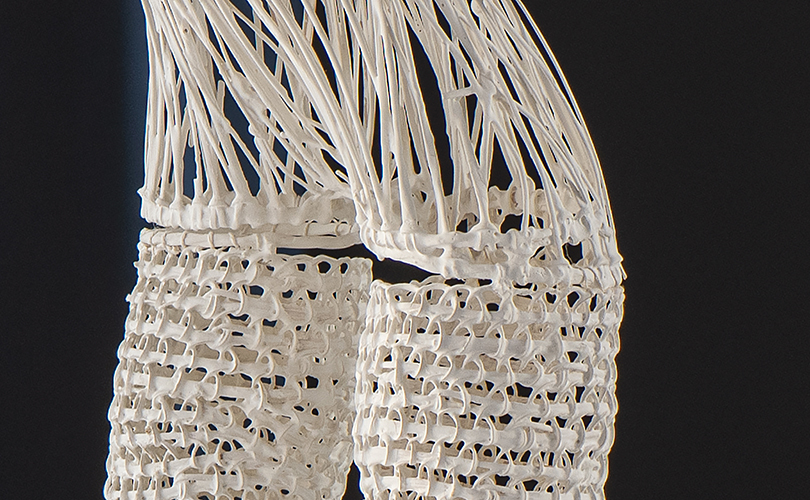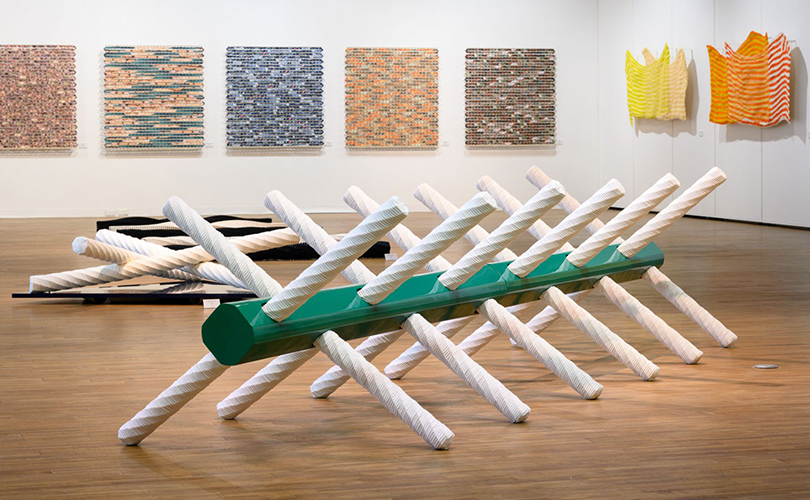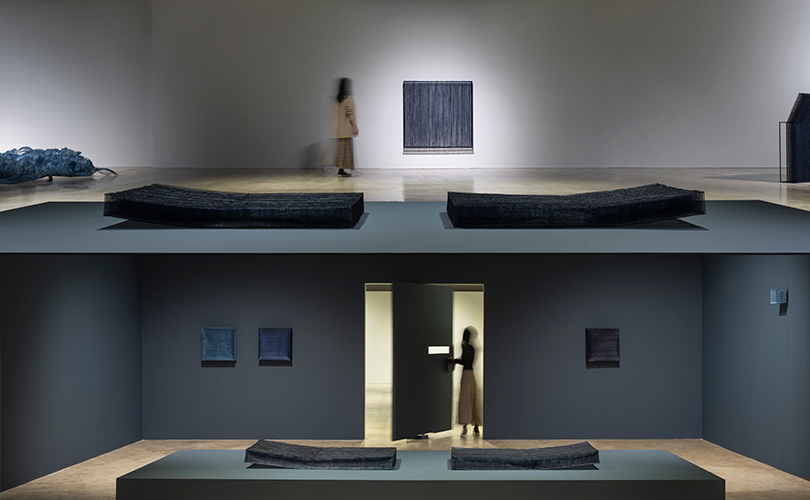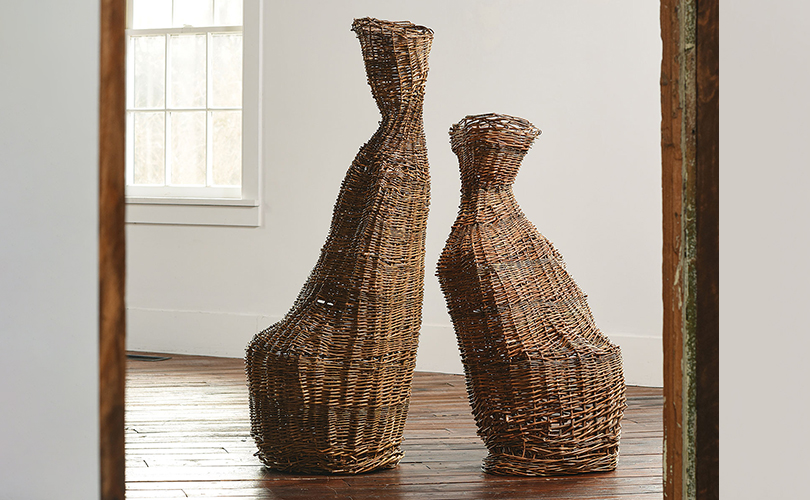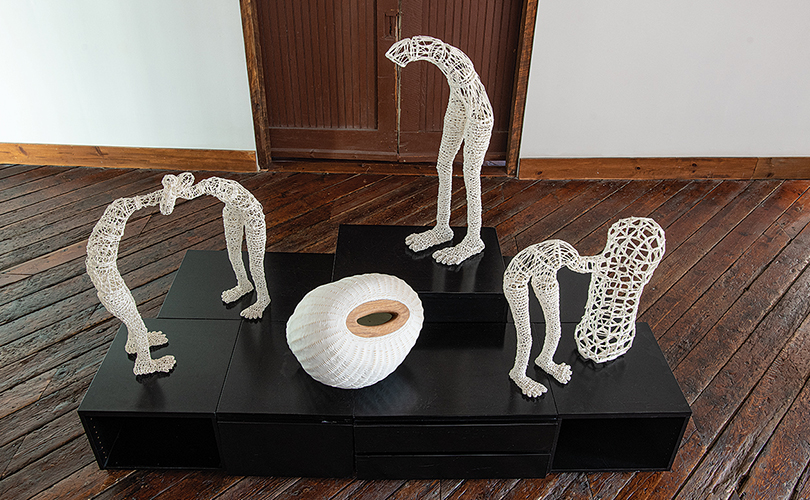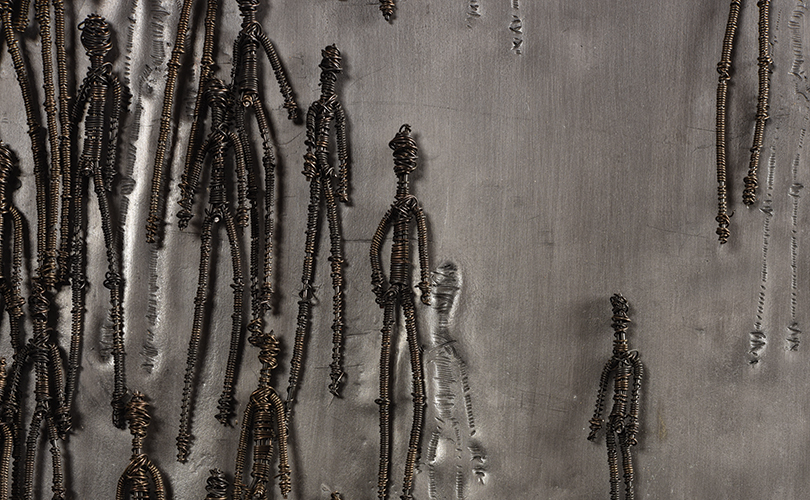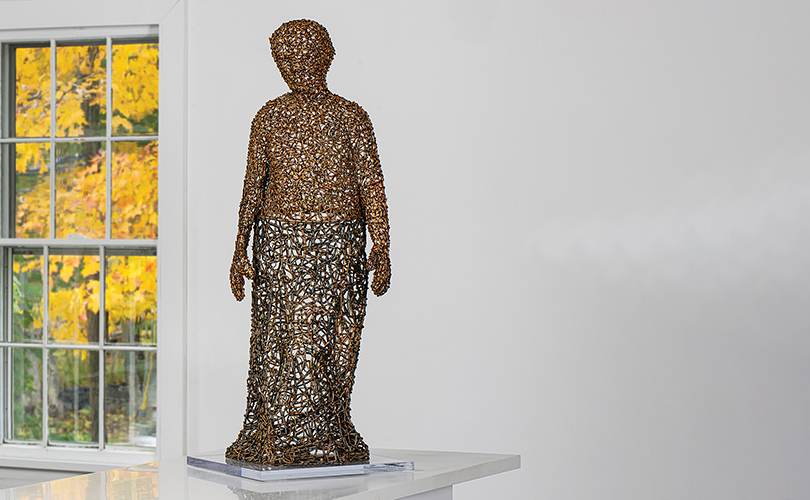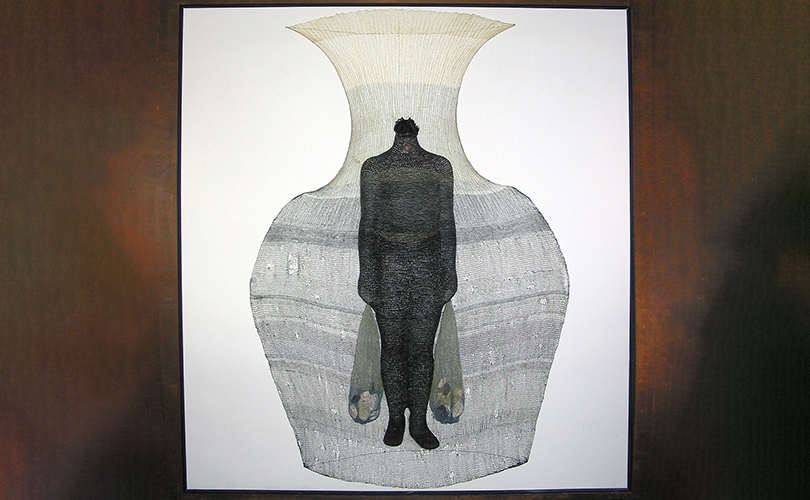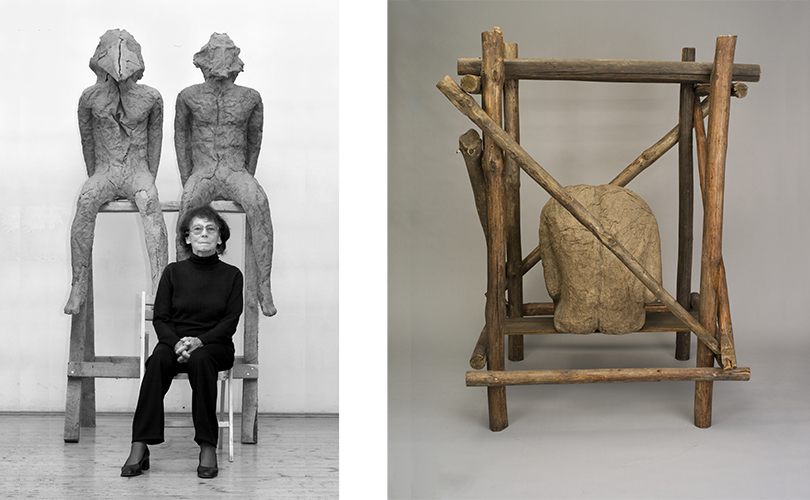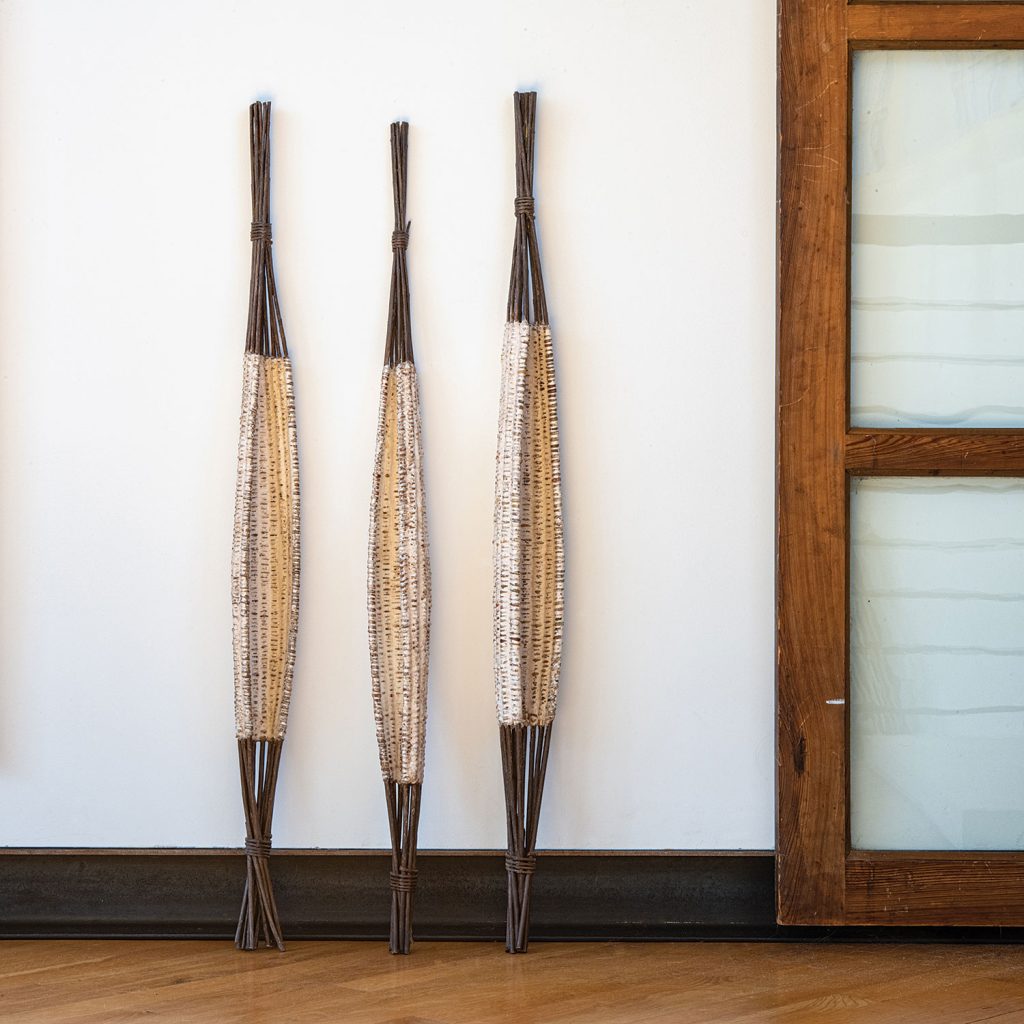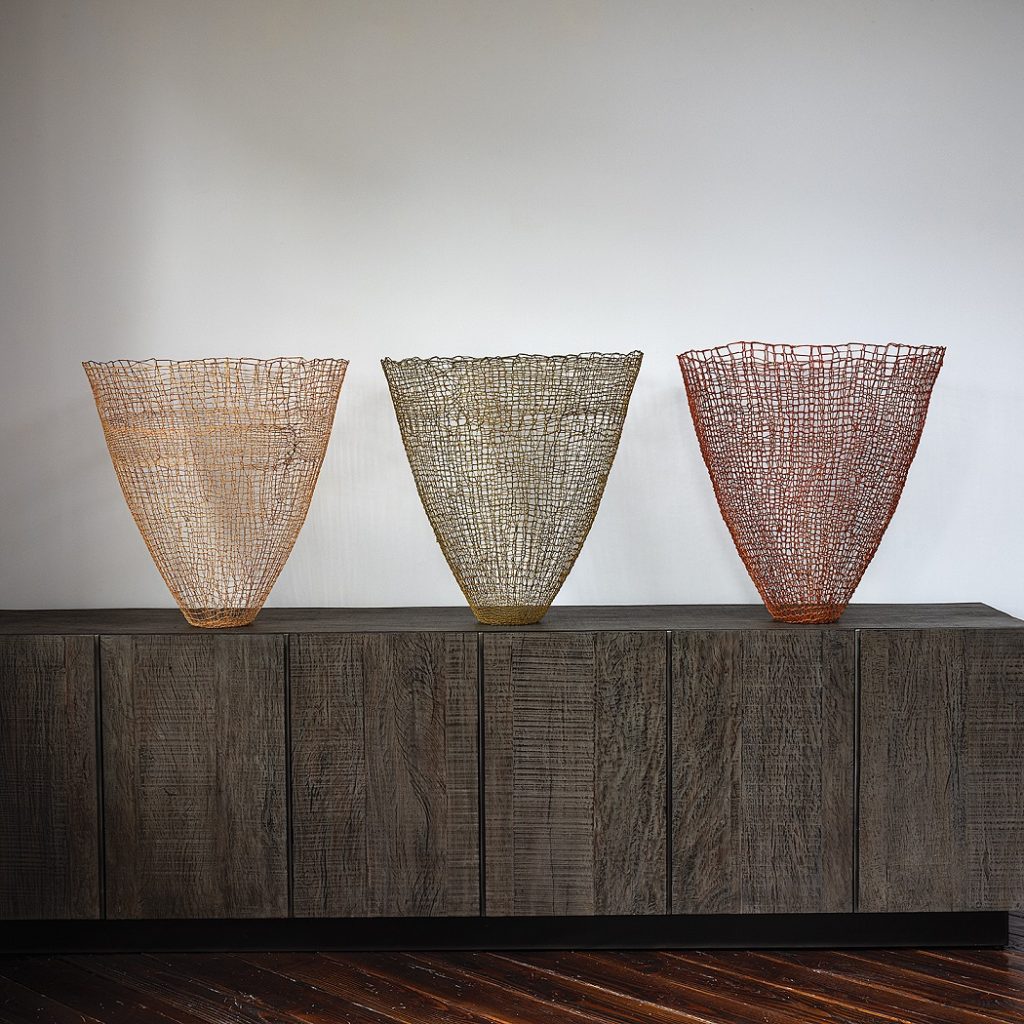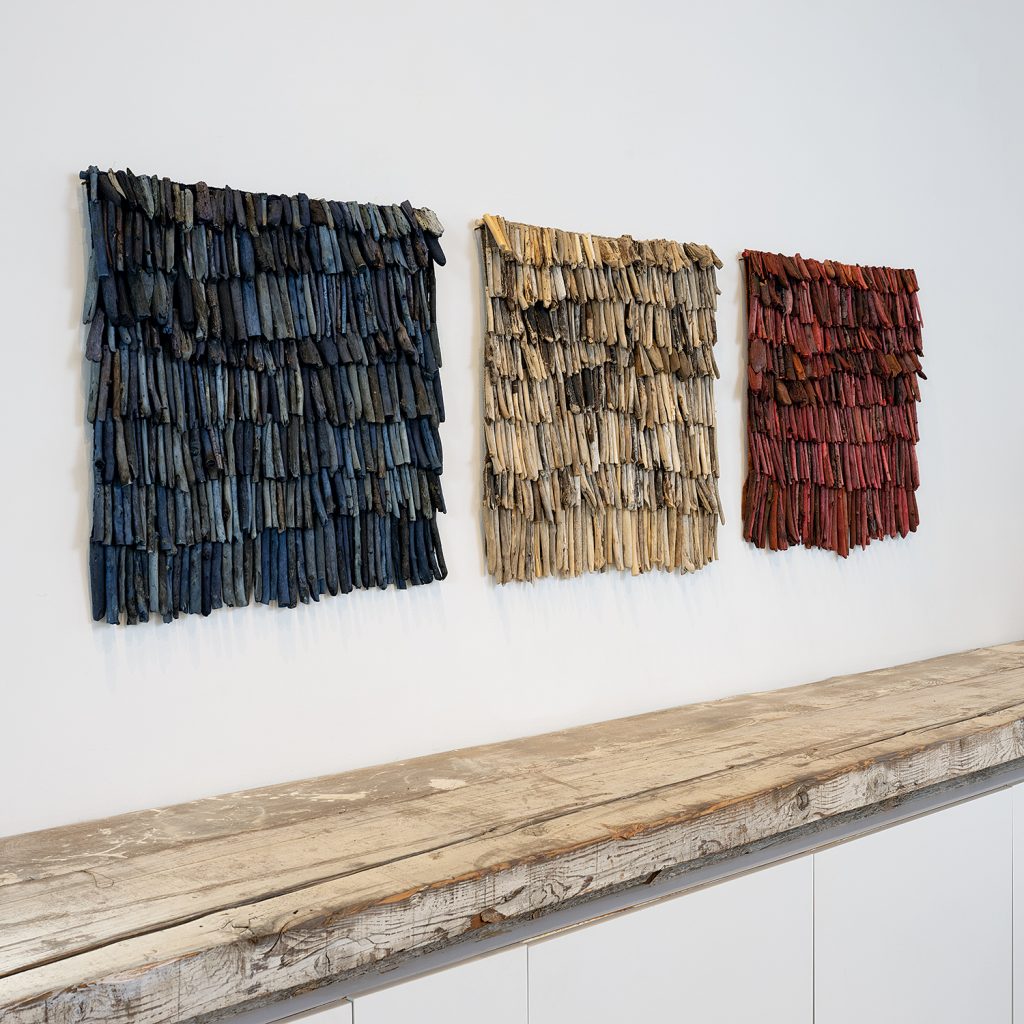The holiday season has commenced and we are feeling extra grateful to have the opportunity to work with so many talented artists! In November we highlighted some of our favorite works; which are currently on display in our Allies for Art exhibition online on Artsy. Read on to see what art we think you should check out!

To kick off our New This Week series in November, we introduced the work of Esmé Hofman. Hofman is an artist that grew up and resides in the Netherlands. She is is known for taking a modern approach to her work. When asked about her process, she has said when creating she is often prepared to look beyond the borders of traditional handcraft – which gives her the freedom to explore creative possibilities.
“As a traditional maker there are three pillars in my work, which are equally important,” said Esmé Hofman. “These are function, materials and technique. By letting the function go, I get more freedom to place an emphasis on form. This gives me freedom to explore new ways of making.”

The second piece we have for our readers is Dobbel Domino, which was created by Åse Ljones. Ljones is a renowned Norwegian artist who is widely known in the art world for her complex hand embroidered pieces, which incorporate stitch drawings that Ljones meticulously details. When asked about her art and process Ljones said:
“To embroider by hand takes time. It is a slow process that gives room for silence. I seek silence. In silence, I retrieve memories and find new paths forward. In all my work as an artist I have eliminated the extraneous. I’ve cultivated simplicity to approach the core of myself, in myself, with fewer measures.”

Things got even more impressive throughout the month with art from Belgium-based artist, Stéphanie Jacques. She is known for being a relentless reinventer when it comes to her art. Figures created by Jacques are clearly humanoid, but less literal.
For a long time I have been trying to create a figure that stands upright,” said Stéphanie Jacques. “All of this is related to the questions I ask myself about femininity and sexual identity. My driving forces are the emotions, the wants and the impossibilities that are particular to me. Once all this comes out, I seek to make it resonate in others. My work is not a lament, but a place where I can transform things to go on.”
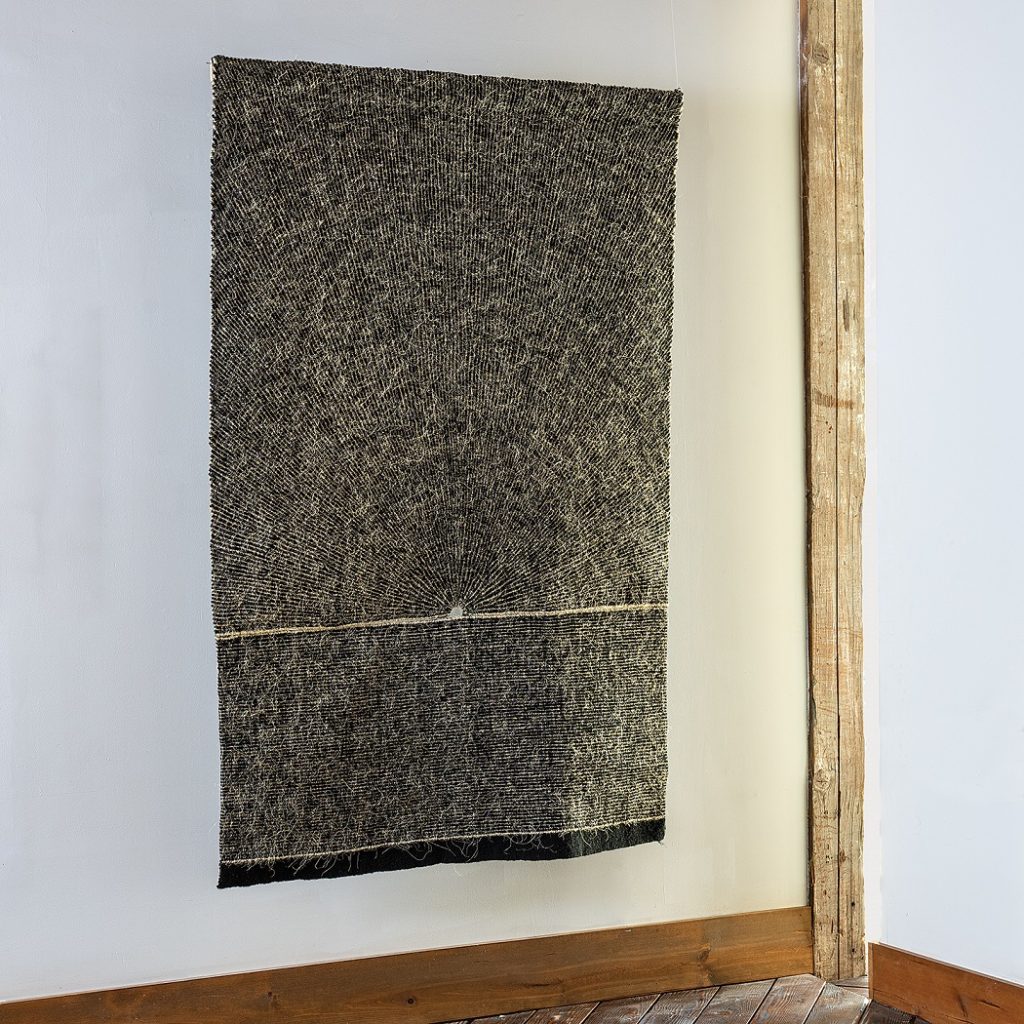
Last, but not least, we bring you the work of Polish artist, Wlodzimierz Cygan. Cygan has been creating (and teaching) groundbreaking textile creations for years and has been exhibited all around the world. Growing up, Cygan lived in a city in Poland called Łódź, which has very strong textile traditions that inspired him to create the works of art you see today.
“When trying to determine why the means of artistic expression in tapestry was becoming archaic,” said Wlodzimierz Cygan. “I realized that one of the reasons might have to do with the custom of treating the threads of the weft as the chief medium of the visual message. . . These observations led me to wonder how the artistic language of textiles might benefit from a warp whose strands would not be parallel and flat but convergent, curved or three dimensional ….”
As always, we hope you enjoyed the art we’ve highlighted throughout November. If you’re keen on any of the pieces that we’ve highlighted, works from Allies for Art: Work from NATO-related countries are viewable and available for purchase on Artsy. The exhibition has been documented in a catalog produced by browngrotta arts. To get a print copy for yourself, click here.

